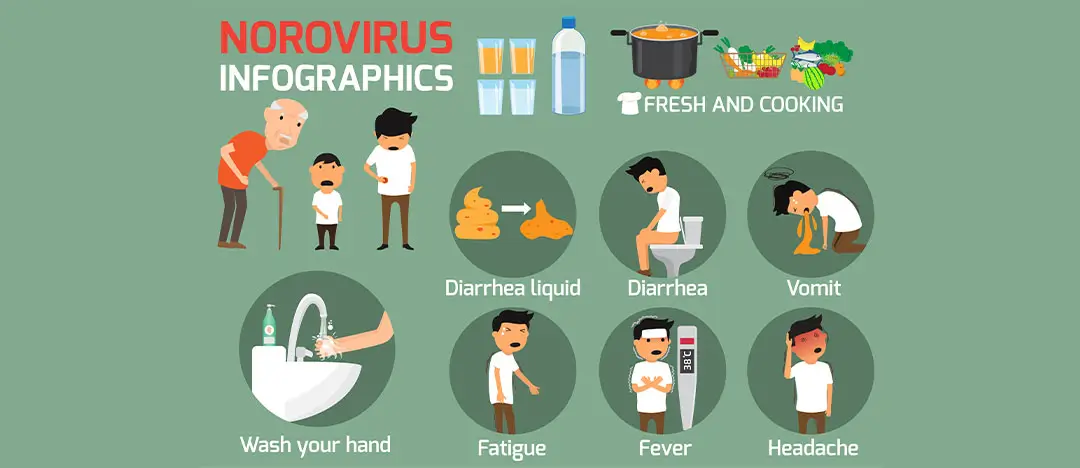The Hidden Impact of Norovirus
The Norovirus, known for causing severe gastrointestinal problems, is responsible for around 110,000 hospitalizations and nearly 1,000 deaths each year in the United States, data from the Centers for Disease Control and Prevention (CDC) reveals. However, the actual figures may be significantly understated due to the selective nature of testing for the virus, which means many cases go unrecorded officially.
Current estimates place the number of Americans affected by the Norovirus annually between 19 and 21 million. Those infected suffer from symptoms such as vomiting, diarrhea, and severe cramping that last from two to four days. Despite the widespread nature of the virus, the vast majority of sufferers do not seek medical treatment. However, approximately 109,000 individuals find their conditions severe enough to require hospitalization, and an average of 900 Americans lose their lives to the virus each year.
Norovirus: Symptoms and Treatment
Symptoms of Norovirus
- Gastrointestinal distress: This includes vomiting, diarrhea, and severe abdominal cramping.
- Nausea: A common precursor to vomiting, contributing to the loss of appetite.
- Fever: Some individuals may experience a mild fever.
- Body aches and headache: General malaise and muscle pains are often reported.
- Dehydration: Symptoms such as dry mouth, dizziness, and decreased urine output can occur due to vomiting and diarrhea.
How to Treat Norovirus
- Stay hydrated: Drink plenty of fluids such as water, broth, or oral rehydration solutions to replace fluids lost from vomiting and diarrhea.
- Rest: Adequate rest is crucial for recovery.
- Electrolyte replacement: Products that help replace electrolytes and minerals can be beneficial.
- Avoid solid foods initially: Start with easily digestible foods like crackers or toast and gradually reintroduce your normal diet as your condition improves.
- Practice good hygiene: Frequent handwashing with soap and water is key to preventing the spread of the virus.
- Clean and disinfect surfaces: Use bleach-based cleaners to disinfect surfaces that may be contaminated.
- Isolate if possible: To prevent spreading the virus to others, stay at home and use a separate bathroom if available.
Advice from Experts
Ron Simon, a top attorney in Norovirus-related cases, highlights the extreme communicability of the virus and its resilience on surfaces, including clothing, making eradication efforts particularly challenging. Simon’s recommendations for reducing the risk of transmission include frequent handwashing with warm, soapy water, diligent cleaning of food preparation surfaces, and minimizing direct contact with food and one’s face. These measures are critical as the virus must be ingested to cause infection.
Additionally, Simon points out a modern source of virus transmission: cell phones, which have become common carriers of communicable diseases.
Rising Cases in the Northeast
The CDC has noted a significant increase in Norovirus cases in the Northeast, with the virus showing no signs of diminishing. Its capacity to mutate frequently means individuals may contract the virus multiple times. Transmission typically occurs through close contact with an infected person or through ingestion of contaminated food or drink, often facilitated by one’s own hands or cross-contamination.
To slow the virus’s spread, public health officials emphasize the importance of maintaining good personal hygiene and proper food handling practices. Specifically, food workers who exhibit symptoms are advised not to return to work until 48 to 72 hours after their symptoms have ceased, a crucial step in preventing further outbreaks.
As Norovirus continues to pose a significant public health challenge, the emphasis on preventive strategies and increased public awareness is vital in combating this relentless virus.
PDF Download Occupational Safety and Health Administration Fact Sheet
Disclaimer: The content available on Little Baby Formula’s website is intended solely for your general knowledge. Little Baby Formula does not offer medical guidance or participate in medical practices. We recommend consulting your pediatrician before choosing to use bottle-feeding. Results may differ from person to person. If you enjoyed this article, consider sharing it and subscribing to our newsletter and social media platforms. Feel free to leave your questions or share your experiences in the comments section below. Happy reading!